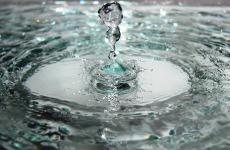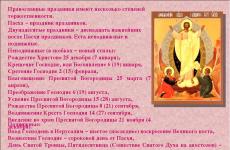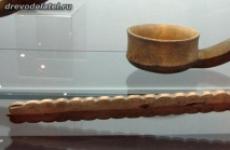Raw turquoise in jewelry. Turquoise: how to distinguish a natural stone from a fake. Product prices
Hello, friends! Today we have a very interesting topic - pressed turquoise. What is it - a natural stone in a special treatment or its imitation? Does it have magical properties or are they lost after this very processing? Find answers to these and other questions in this article.
Pressed turquoise as a response to increased market demand
Turquoise is a mineral loved by all peoples since ancient times. For many centuries, it has remained in demand and popular, and therefore, despite the fact that this rock is not considered rare, today natural high-quality stones are not often found on the market. Time passes, existing mines are depleted, and the development of new ones is inactive - it is not always economically profitable, since the gem is typically found in small quantities.
And, nevertheless, the needs of the market must be satisfied, and therefore jewelers embark on various tricks. One such trick is pressed turquoise. We note right away that the answer to the question of whether it is natural will be positive, however, this is the lowest quality natural stone on the market.
What is it - pressed turquoise

Natural and pressed stone: differences
But there are still differences between natural and pressed stones.
- In the first case, we are talking about a pure mineral, in the second one cannot count on absolute purity. Since a gem is made from waste, it must be understood that not only particles of turquoise are found in it and pressed, but also some of the “garbage”, which in this context means chalk-like rock and other minerals. In addition, glue, cements, dyes are also added.
- On the other hand, if a product made of a pressed mineral indicates that it is exactly what it is, it is hardly worth treating it with skepticism. In the end, this is an opportunity to buy a beautiful piece of real semi-precious stone jewelry at an affordable price. In addition, this is a great option for lovers of massive jewelry. Of course, pressed turquoise earrings are perhaps an extra savings, because in this case, as a rule, medium-sized modest stones are meant, but when it comes to massive bracelets and necklaces, pressed stones allow you to save a lot of money.
However, the availability of jewelry is not the only advantage. Stones, artificially strengthened and colored, are distinguished by greater hardness than natural minerals without special treatment. And, besides, they are brighter, do not fade over the years and do not require too careful care.

Does pressed turquoise have magical properties?
With all this, the pressed mineral retains all the magical properties of the natural one. Perhaps they will be slightly weakened, but in general turquoise is such an energetically charged mineral that this weakening is unlikely to be noticeable.

How pressed mineral affects health
Keep pressed stones and healing magic.
- The mineral has a general healing effect on the body, strengthens the immune system, fights chronic fatigue.
- It has a gem and more "narrow" purposes - it treats insomnia and diseases of the nervous system, has a beneficial effect on the digestive system, heart, thyroid gland, throat and eyes.
- And he especially favors women's health - not only treats specific diseases, but also helps with childbirth. So if you believe in the magic of stones, be sure to take a turquoise amulet with you to such a significant event.
Who should beware of turquoise stones
Despite such an impressive list of positive features of pressed turquoise, it, like natural, has one drawback - it has a zodiac character. However, fortunately, it is not too selective. All signs can count on magical and healing properties, except lion And Dev.
- For Dev, usually fragile and timid, this gem is too powerful. lions, on the contrary, and without the additional strength of the mineral are very energetic. As a result, in both cases, turquoise can lead to one or another adverse effect.
- As for other signs, they can not only count on all of the above benefits, but also on the correction of their main negative features. For example, Aries turquoise will save you from rash acts, Gemini help to overcome the duality of nature and make friends with your own self, Cancers- forget old grievances and mistakes, etc.
 Pressed turquoise or imitation: how to distinguish
Pressed turquoise or imitation: how to distinguish
So, we came to the conclusion that whatever the quality of a natural stone, it still retains magic and magic, but the problem is that often even the lowest quality stones, that is, pressed ones, are faked on the market.
Turquoise, unfortunately, opens the widest scope for imitation. They are made from various artificial materials, from stones similar to turquoise, or even grown in laboratories - this type of turquoise is called "synthetic". What tricks are not used by scammers in view of the high consumer demand, there are even precedents when imitation was made from the bones and teeth of fossil animals!
Of course, as you may have guessed, any fake, even a high-quality one, does not contain any magic of natural turquoise, and therefore if you are interested in a stone not only as an ornament, but also as a valuable amulet, you should be very careful when buying it.

- The cheapest fakes are the easiest to distinguish, they usually use low-quality dye. A napkin soaked in alcohol will help to identify such a product - rub the product properly with it - natural should leave it completely clean.
- You can also check the stone for authenticity using a red-hot needle - you need to prick the mineral with a hot sharp metal. Natural stone will change color or, if it has been treated with a hardener, a drop of impregnation will come out, and no pronounced smell should appear. If you have a fake in front of you, most likely, you will feel an unnatural smell.
- With the same needle, only already cooled down, you can lightly scratch the stone. On the natural one, not pronounced, but a scratch will appear. But a fake can either not be scratched at all, or damaged too much.
In general, it should be noted that there are many more such authentication experiments, but scammers go to different tricks and expect you to conduct them. So the best guarantee of buying real turquoise will be its purchase in a trusted store. In addition, it’s great if a person who understands stones and can distinguish a real mineral literally “by eye” is present with you.
Well, now you know that pressed turquoise is not an imitation of natural, but a real stone that has all the magical and healing properties typical of a mineral, albeit a little weakened due to the peculiarities of processing.
Be sure to share this article with your friends on social networks - even if they are not afraid of the inscription "pressed turquoise" on the label of a jewelry or amulet! As you can see, we can learn a lot of interesting facts about stones that will be useful to you in life, so subscribe to our newsletter soon. And then the next time you have a thirst for knowledge, you will not have to look for us for a long time. This saves a lot of time for our readers. See you!
Team LyubiKamni
Turquoise belongs to soft minerals, and therefore is quite sensitive to various external influences. If you wear jewelry with her too often, she will gradually turn pale, becoming whiter. Due to the instability of color since antiquity, this gem has been subjected to additional processing. This is all the more true now, when natural stone deposits are depleted. The processed material surpasses natural in its qualities - it is stronger and does not fade in the sun. It is this turquoise that is used to make jewelry.
For the most part, this mineral is considered semi-precious, but there are specimens that can be called precious. Such a gem, unlike a semi-precious one, is translucent and has a beautiful blue color. Similar specimens of the total mass of only 10%. In jewelry, precious turquoise is used both in its natural form and in the form of plates and crumbs. The cost of such jewelry is many times higher than ordinary products with opaque turquoise inserts.
imitations
Semi-precious turquoise is much more common than precious and has a slightly lower quality and less durable color. In such minerals, inclusions are more common, sometimes too large. Their color is the most diverse, these are blue tones, and green, and even yellowish. Such gems make up most of the deposits. Its semi-precious varieties are most often set in silver and used to make figurines.

It is this turquoise that is easiest to fake, unlike the precious one. A huge number of fakes are due to the constant demand for this beautiful blue stone. The vast majority of turquoise products on the world market (data vary from 60% to 80%) were subjected to additional processing in order to improve decorative and operational qualities. There are also many artificially grown stones, most often for this purpose they use a mixture of crumbs of various minerals and epoxy resins.
The most common imitations:
- pressed stones;
- gems masquerading as the original - lazulite, variscite, etc.;
- tinted natural gems, such as quartz or chalcedony;
- fossilized bones (odntolith);
- synthetic materials, plastic, glass, enamel, etc.;
- doublets.
White turquoise, blue, blue-green, etc. are divided into several varieties depending on their origin, etc. It is worth dwelling on them in more detail, focusing on the classification adopted in jewelry terminology.
natural turquoise
This species includes all non-ennobled stones, such copper turquoise(the mineral contains a high amount of copper, which gives a blue-green palette of shades) was not subjected to additional processing. This means that the minerals were not impregnated with special substances and were not tinted for a brighter shade. Of course, not every natural stone goes into jewelry, but only raw materials of the highest quality. Such minerals have the greatest hardness and their only processing is grinding and cutting.
Turquoise is considered one of the most beautiful and popular decorative stones used for inlaid jewelry: rings, earrings, pendants, bracelets and rings. To date, most of the mineral deposits have dried up, but a huge amount of jewelry, as if by magic, appears on the stands of jewelry stores. Imitations and fakes, synthetic and artificially grown - this is how the range of products is replenished by manufacturers. How to distinguish real turquoise from a fake?
There are several basic minerals that have a similar composition and are quite reminiscent of the original. One of them is the mineral faustite, which is called "emerald turquoise". Another copy used for the production of fakes is variscite. The mineral is aluminum phosphate, the characteristic turquoise color of which is given by impurities of chlorine and iron. Most often, howlite is used for high-quality forging jewelry. Gray by nature, it has a similar structure to a genuine gem, while being perfectly stained.
A natural, solid turquoise gem is rarely used for inlay today. In the production of jewelry, several varieties of pseudo-original mineral are used: ennobled, reconstructed or impregnated. Interestingly, these materials are not considered fake.
How to distinguish natural turquoise from an artificial mineral? Synthetic turquoise gem (artificially grown) surprisingly exactly repeats the composition of the genuine one, and it is virtually impossible to distinguish it on your own without special equipment. The only thing that can be noted is that the uniform distribution of mesh inclusions indicates a fake.
Natural turquoise. How to distinguish from imitation at home?
Having decided to buy jewelry, find out about the deposit and its authenticity, ask for a certificate and documents.
- Inspect the copy carefully, if the mesh inclusions are much darker than the base - most likely you are being sold a cheap imitation.
- If looking at the gem, you saw air bubbles - in front of you is a fake made of glass.
- Seeing the cracks, you can immediately tell that they are trying to sell you a synthetic stone or a fake made of plastic.
- By treating the surface of the stone with a cotton swab with acetone, you can find out if it has been tinted.
- A great way to check if the copy in front of you is real is to run a hot needle over it. If the item melts, it is definitely not a genuine gem.

For sure, you can determine the authenticity of the product using a Chelsea filter or a refractometer, which will tell you exactly whether the jewelry is natural. To do this, you need to contact a specialist gemologist or jeweler who will conduct the necessary texts, tests and checks, determining the true origin of the jewelry.
The Mineral Market online jewelry store in St. Petersburg is a unique opportunity to purchase jewelry with natural turquoise stones, as well as learn how to distinguish turquoise from a fake, identify a synthetic imitation of a gem, and learn about the magical properties of precious and ornamental stones.
Ornamental semi-precious stone turquoise is still one of the most popular gems. It has predominantly green, blue, turquoise shades. How to properly wear jewelry with this gem, how synthetic turquoise differs from real, is described in detail below.
The stone has pleasant turquoise, blue, green shades. Mostly in nature, round-shaped gems are found, of different sizes (of the order of several centimeters). Stone is mined everywhere, and many deposits have been known for several millennia, so they are significantly depleted.
The chemical formula of the mineral CuAl 6 4 (OH) 8 5H 2 O. That is, from the point of view of chemistry, it is a mixed phosphate (aluminum and copper) combined with water and an OH group. In percentage terms, the content of various components is as follows:
- aluminum oxide Al 2 O 3 37%;
- copper oxide CuO 10%;
- water H 2 O 20%;
- impurities 33%.

THIS IS INTERESTING
It is clear that the word "turquoise" has one root with the name of the color shade. And etymologically, in translation from Persian, it means "stone of happiness", as well as "one who won the victory."
Where is the mineral mined in Russia
Not many mineral deposits are known in our country. For a long time, when Central Asia was part of the Russian Empire, and then the USSR, Uzbekistan and Kazakhstan could be attributed to such places.
At the moment, mining in some regions of the Urals has been preserved on the territory of the country. The deposits are mainly associated with copper deposits.(it is obtained in the form of salts or oxide).
Turquoise stone properties (video)
Colors, shades and varieties of turquoise
Varieties of the mineral are distinguished on the basis of different criteria. First of all, the age of the gem matters, since its color and even how much the product costs depends on it.
Color classification
The most obvious classification related to the appearance of a stone is based on color. It is by color that the description and give a description of the varieties of gem:
- White, sky-blue color indicates that the gem has not yet "ripened". These are the youngest and most inexpensive varieties.
- Saturated blue is a mature mineral, which is also the most expensive modification.
- Green gems belong to the older forms, as the stone may turn green with age.
NOTE
naturalvarieties have just such colors. They are represented by light blue, rich blue and green tones. All other colors (red, yellow) refer to natural or artificial imitations of the original mineral.

natural varieties
Natural types of stone are usually divided into 4 categories depending on their appearance and properties:
- natural variety- a hard stone with a non-porous (dense, pressed) structure. The word "natural" means "created by nature", i.e. this is the raw form. Such a mineral was mined directly in the deposits.
- stabilized(also called cemented or reinforced) variety. This stone has a softer, porous structure with lime impurities. After extraction, they are immediately impregnated with organic cementing materials - resins, waxes, fats, etc. Thanks to this, it is possible to preserve the original color, as well as improve the structure of the stone body.
- ennobled view a stone is called that has undergone the processing described above, but has also been tinted, “enhanced with color”. Such a mineral looks especially beautiful.
- Restored form(it is also reconstructed) - similar to the real one, but still with differences. It is made on the basis of small grains of gems, which are found in poor deposits (or taken after the production of more expensive items). Then these particles are glued under pressure, resulting in a kind of pressed stone.

artificial imitations
Artificial stone imitations are hard objects that closely resemble the original in color and texture. However, they have a fundamentally different chemical composition and origin. They are generally called synthetic analogues or simply imitation. Actually these varieties are different materials:
- enamel;
- polymers;
- "Neolithic";
- "Viennese turquoise"
- porcelain;
- ceramics;
- glass;
- synthetic turquoise.
NOTE
Natural imitation should be distinguished from artificial imitation. In the first case, we are talking about materials created by man. The second refers to natural minerals that are very similar in appearance to the original (see the corresponding section).

Classification by region of origin
Of great importance is the classification depending on the origin of the gem, since the mineral deposit affects its quality and color range. The most famous varieties are:
- Iranian (Persian) is one of the most luxurious forms. Today, it is mined in extremely small quantities, since it has been mined in Persia (present-day Iran) for several thousand years.
- Tibetan is mined in China, and 8 out of 10 stones in the world come to the world market from here (inexpensive stone imitations, of course, do not count).
- The Afghan one is extremely rare - the deposits are depleted. In addition, it is difficult to extract the mineral due to the unstable military-political situation in the region.
- The African variety today comes predominantly from Egypt. Until recently, stones were found on the territory of the Dominican Republic, but today the income from there is insignificant.
- Since the countries of the Middle East, as well as Africa, no longer supply so many stones, the Arizona deposits began to develop. This is one of the most expensive modifications of the gem, it has high quality and pleasant classic shades. The price per gram is about 1500-2000 rubles.
- Kazakhstani does not have the same quality, but is more affordable.
- The Indian variety has been mined in this country for a long time. Indian yogis treat this gem with special reverence, believing that this stone is of great benefit to the vocal cords, throat and thyroid gland.
Gallery: turquoise (44 photos)
THIS IS INTERESTING
In many European languages, the Persian word for "turquoise" has a similar pronunciation. For example, the French "Turquoise", the English "Turkoise", the German "Turkis".
Description of the properties of the stone
The healing properties of the gem have been known for more than one millennium. It is especially widely used in Indian folk medicine. Description of properties in terms of physics and lithotherapy is given below.
Physical
The physical properties of the stone include the following:
- Shades of color are predominantly blue and green, often interspersed with brown.
- Line color is white. This refers to the color of the strip that a stone leaves if it scratches a ceramic tablet.
- Luster is waxy.
- The mineral is completely opaque.
- Hardness is about 5-6 on the Mohs scale. There are only 10 marks in this scale: 1 corresponds to talc and 10 to diamond.
- Density is about 2.7 g/cm 3 .
- The structure of the crystal lattice is triclinic. That is, such a lattice is based on three vectors of different lengths; they intersect at different or equal angles that are not perpendicular.
- The refractive index is about 1.62-1.64.

Healing
In lithotherapy, the mineral is used for a variety of purposes:
- for the treatment of a diseased liver;
- for recovery after inflammation and purulent formations on the skin;
- with reduced immunity;
- with disorders of the nervous system, insomnia;
- for the treatment of stomach ulcers;
- for eye problems.
Interesting, that this decoration is considered a reliable diagnostician. If the stone began to lose its luster or darken, its owner should pay attention to their health. It is possible that some kind of illness has begun - it is better to get examined by a doctor as soon as possible.
MOVEMENT OF PROGRESS
Recently, artificial nanocrystals have been produced, on the basis of which synthetic analogues of stones, including turquoise, are obtained. These gems are no different from natural ones in appearance, but as amulets they are of no value.

Legends and stone magic
Since the stone has been mined for several millennia in a row, a large number of legends and beliefs are associated with it. Here examples of the most interesting of them:
- The Navajo Indians, who live in Arizona, consider this stone to be heavenly tears that shed on earth after the creation of the world. With the help of a gem, Indian shamans treated disorders of the nervous system of their relatives. If during the ceremony the stone cracked, they believed that the evil spirits left the person and said "The stone took him" (ie evil).
- Muslims believe that the first copy of the Koran was written just on the "pages" of this mineral.
- The ancient inhabitants of Tibet tried to take a surname for themselves, which is related to the word "turquoise". They were sure that this would bring happiness and prosperity to the whole family.
- Before the next birthday of his wife Maria Louise, her husband Emperor Napoleon Bonaparte was thinking how to please his beloved. Of course, the choice fell on a tiara adorned with emeralds and diamonds. But at one point, the unpredictable Napoleon changed his mind and ordered to replace all the precious stones with turquoise.

Scope of the mineral
If in ancient times (and sometimes today) the mineral was used mainly as a medicine and an amulet, then at the moment the use of the gem is based on its aesthetic qualities. The gem is used to make a variety of jewelry:
- finger rings;
- earrings;
- pendants;
- beads;
- bracelets and others.
THIS IS INTERESTING
It is believed that if there is turquoise in the frame of the ring, it will bring the owner spiritual happiness and prosperity to his house.

Determining the authenticity of turquoise at home
It is quite difficult to determine at home whether a real stone is in front of you or not. This can only be done in some cases, when the fake material is very different from the classic stones, for example:
- If the imitation is made of gypsum, you can touch any place on the gem with a hot needle. This area will discolor or the stone will begin to melt, which will never happen with the original jewelry.
- If you wipe the product with a damp cloth, and the paint remains on it, then it is a fake.
- If we are talking about beads, you can see what the inner surface looks like (near the hole). If it is very different in color, then this is again an imitation.
- Natural stone will crack when heated (quartz will not). Therefore, do not try to check in this way.
NOTE
If the need to detect a fake is of great importance, a special examination is carried out. You can check the authenticity of the stone for $500-600.
To whom turquoise brings happiness (video)
The difficulties of determining a true gem and a fake are also associated with the fact that in appearance and texture quite a lot of minerals look like a gem:
- howlite (howlite, kaulite);
- aquamarine (most often it is transparent, it is more difficult to confuse);
- variscite;
- chrysacolla;
- lazulite;
- colored quartz (the most difficult option, which is difficult to distinguish from the original stone);
- wardite;
- stellarite;
- faustite;
- odontolith.
Thus, the purchase of a product can only be made in a trusted store, and there must be appropriate documents for the mineral and the specific product. Otherwise, there is a big risk of getting an ordinary imitation or even a fake instead of a gem.
Turquoise of good quality is rare in nature and has amazing beauty. Due to the uniqueness of the mineral, it is often counterfeited, passing off plastic, synthetic and less expensive minerals as a genuine gem. Many imitations are made so skillfully that only a jeweler can accurately answer the question of how to distinguish turquoise from a fake.
Natural turquoise is a semi-precious stone with a varied color palette. The tones of the mineral range from pale blue to bright blue, some specimens can be white or green. The most sophisticated is considered the natural color of the color of the sea wave, however, many people prefer examples of sky blue.
Such a variety of gem tones is an advantage for imitation makers. Unscrupulous jewelers often pass off painted glass or cheap rocks as a real stone, which are difficult for the average person to distinguish from a natural gem.
Deposits of natural turquoise are not eternal, and large minerals are almost never found in deposits.
Therefore, if the price of a piece of jewelry is suspiciously low, it is safe to say that it is a fake, and not a semi-precious natural stone.
Characteristics of real turquoise:
- price - from 5 dollars per carat;
- wide range of shades;
- hardness - 6 units. on the Mohs scale;
- there is no transparency;
- gloss - weak, waxy;
- density - 2.6-2.8;
- discolors when exposed to direct sunlight;
- fracture - conchoidal;
- syngony - triclinic;
- dispersion - absent;
- fades with prolonged contact with moisture.
Types of fakes
The Egyptians were the first to create fake turquoise - beads made of fake material were found in the tomb of the pharaoh, the date of manufacture of the jewelry was 1350 BC. e. Over time, fakes have not lost popularity, on the contrary, their number has increased, and the quality of fakes has improved. With the help of high-tech equipment, samples are created that are so similar to the original that even experienced jewelers cannot recognize the origin of the material at a glance.

Jewelry sold at a low price is a cheap imitation of the original stone. Most often it is synthetic turquoise, plastic or glass.
Analogues of natural stone:
- Pressed products- are made from pressed crumbs of real turquoise, with the addition of glue and dyes. The result is a "diluted" version of the natural mineral, since there are fewer natural components in pressed stones than synthetic materials. Sometimes the pressing process is carried out using electric current, which increases strength and improves the color of the finished product. In this case, it is difficult even for professionals to distinguish a fake from the original.
- - this is the name of one of the types of stones obtained as a result of pressing. Such an imitation differs from the usual pressed composition: it includes aluminum hydroxide and malachite chips. The components are crushed and then exposed to high temperatures. The result is a mineral with greater hardness than other fakes - 5 units. on the Mohs scale.
- Neolithic is a synthetic turquoise, outwardly indistinguishable from the original. It has a light blue color with dark veins, looks beautiful and natural. The composition includes iron, copper and bayerite, hardness - 4 units. on the Mohs scale.
- - one of the cheapest and most affordable materials for making imitations. Ordinary glass is dyed in the desired color, and silicate glass is mixed with metal oxides.
- - plastic fakes are cast in special molds. They are easy to distinguish by their too bright color and glossy sheen.
- stabilized turquoise. Crushed natural raw materials are impregnated with hot resin, dyes are added.
- Natural blue stones- lazulite and variscite - also serve to create jewelry and products. Both minerals have an azure color, so after processing they are difficult to distinguish from real turquoise. This imitation is the highest quality and closest to the original.
- - a group of minerals that includes chalcedony, magnesite and howlite. Unlike lazulite and variscite, they have different colors, so they are chemically treated with dyes. With successful staining, imitation is considered worthy.






The main ways to detect a fake
You can determine the authenticity of turquoise using several simple verification methods. The following methods will help to identify a fake when buying:
- A cheap imitation, such as glass or plastic, is light in weight, so just weigh the stone in the palm of your hand.
- The naturalness of a gem can be determined by the presence of veins and color saturation. Artificial turquoise looks unnaturally perfect and bright.
- A real mineral heats up slowly, so the jewelry is squeezed in the hand - at first the stone emits a slight cold, and then gradually warms up.
- When checking a bracelet or beads, you need to look into the hole in the bead. If the inside is a different color from the outside, it's fake. Natural turquoise is colored uniformly even inside.
- Jewelers look at the size of the mineral. The original samples reach no more than 1-3 cm, anything larger is most likely turkenite or some other imitation. Real stones of this size are considered a rarity.
- The cost of the product will also indirectly indicate the origin. The price of one carat of turquoise starts from 5 US dollars. If the jewelry consists of many beads and is cheap, these are not natural stones.
- Another guarantor of authenticity is a certificate of conformity. Before buying jewelry with turquoise, you should ask the seller for confirmation in the form of a certified certificate, which will indicate the data on the origin of the mineral.
- A magnifying glass or microscope can be used if the sample size allows. Examining a natural stone under multiple magnification, you can see the porous structure. A fake will differ in a different structure, for example, the presence of bubbles will indicate an imitation made of glass.

How to authenticate at home
If the jewelry has already been bought, but the nature of the origin of the stones is in doubt, then more accurate and extreme methods of determining originality are used: heating or strength testing. These methods are applicable at home, because they entail damage to the mineral, which the seller in the store will not allow.
Ways to check the origin of the stone:
- Decoration made of plastic or plastic is usually painted with unstable paint. To determine the authenticity, the product is carefully wiped with a cotton pad, abundantly moistened with alcohol. Natural turquoise will not leave any trace, and imitation will stain cotton wool.
- The correct test method is heating. The gem is held for a few seconds over the fire to reveal the structure. The artificial mineral will have a characteristic burnt smell, while turquoise will crack a little along the veins, but there will be no smell, and howlite will remain without a single damage. In order not to spoil the product, the check is carried out on the reverse side of the jewelry.
- It is safer to use a heated needle. It is stuck into the surface of the stone, and they look at the result: the fake will melt, the colored mineral will brighten at the site of impact. Real turquoise will not change color, but stabilized or pressed will release a drop of impregnation at the injection site.
- Checking the naturalness, the stone can be scratched with an awl or a needle. A slight scratch will appear on the turquoise, the plastic will crumble with white chips, but howlite or chalcedony will not receive any damage.
Turquoise is a semi-precious stone, because of its beauty and rarity, it is often faked, so when buying, you should be careful and careful not to be deceived. You need to purchase jewelry with a mineral only from trusted sellers. If in doubt, simple ways to determine the authenticity of a gem will help.








